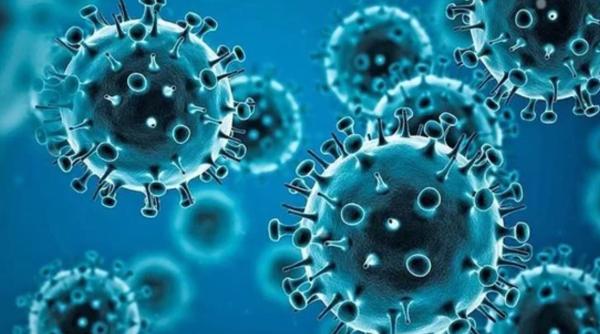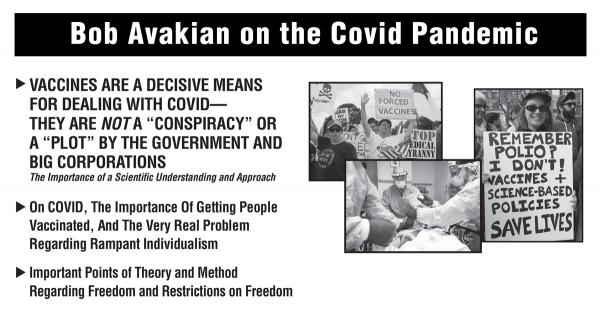
Omicron variant representational image
On November 24, the government of the Republic of South Africa reported the emergence of a new variant1 of COVID-19. At that point, the number of definitively identified cases of Omicron in South Africa was under 100. The earliest known case had only appeared on November 9.
Nonetheless, on November 26, the World Health Organization (WHO)2 declared Omicron to be “a variant of concern” (“VoC”), its most serious classification. Following this, stock markets and oil prices tumbled; the U.S. and many other imperialist countries issued travel bans for non-U.S. citizens traveling from eight southern African countries (only a few of which had any known Omicron cases).3 Governments began reexamining their COVID plans. New York’s governor declared a state of emergency.
Why Did Omicron Generate a Worldwide Reaction?
On November 24 very little was known with certainty about Omicron. Nevertheless, based on what was known then (and what has become clearer since), WHO’s decision to declare it a VoC was not an overreaction, even though our knowledge is still quite minimal, and it is still not certain that Omicron represents a major new threat.4
What scientists were looking at two weeks ago was primarily the genetic sequencing of the Omicron genome. What they found included the following:
- There were about 50 mutations in Omicron that set it apart from other variants. In general, more mutations mean more potential for different properties. In particular, mutations make it more likely that the antibodies that are generated either by vaccination or by prior infection with COVID will not recognize Omicron as an intruder that needs to be attacked. This is called vaccine “evasion.”
- About 30 of these mutations were to the spike proteins that protrude from the coronavirus. These spikes are key to how the virus attaches to, penetrates and infects human cells. For that reason, vaccines were developed to recognize and attack these spikes. Mutations to the spikes could very well mean that vaccinated people’s defenses would be at least partially neutralized.
- Also, certain mutations seen in previous variants are identified with higher rates of transmission. Some of these “high transmission” mutations have been found in Omicron, in much higher numbers than in earlier variants. This points to the danger of Omicron spreading even more rapidly than past variants.5
It’s important to note that none of this proves that Omicron will be more transmissible, or more severe, or will evade vaccine or natural immunity. For one thing, with this many mutations—many of which are new and unknown—it is possible that some will counteract others and that the “total package” won’t be dangerous.
But it is somewhat like meteorologists studying a tropical storm in the Gulf of Mexico, and analyzing the conditions that could lead to it becoming a level four hurricane and slamming into populated areas. Under those circumstances, it is correct and urgently important to begin raising the alarm and preparing for the worst. And that is how scientists and public health officials have basically responded, even while recognizing that their knowledge at this point is very limited and their concerns could end up being overblown.
What Has Happened with Omicron Since It Was Identified?
Unfortunately, much of the limited data that has emerged in the past week has validated the concerns of WHO and other scientists.6
- Omicron has spread rapidly around the world to at least 40 countries. In the U.S. as of December 5, there were several dozen known cases. But public health experts acknowledge that there is already “community spread” (meaning the virus is afoot among many people who have not been to South Africa and have no ties to anyone who has). New York City mayor De Blasio stated that “We know that we now have cases in New York City. We have to assume that means there’s community spread.” At this point there is little likelihood of containing this variant in one or a few regions of the world.
- In South Africa, Omicron is driving a major surge of coronavirus infections, with the total number of cases in the most affected province doubling every three days. From 100 cases on November 24, the Omicron variant now accounts for about three out of four new cases, and its rate of spread (known as its “Rt” number) is more than twice as high as the Delta variant.
- On Friday, December 3, the South African government also reported that hospitalizations were starting to rise sharply. And, particularly worrisome, they reported that children under the age of five were being hospitalized at a much higher rate than during the opening weeks of the Delta surge. The city of Tishwane Metro had 20 hospitalizations of young kids during their last big COVID wave in May; it had over 100 in the first two weeks of Omicron.
- It also seems to be the case that Omicron is able to evade “natural immunity”—that is, immunity acquired from past infection with another variant of COVID. And there is significant—though less strong—evidence that it can evade vaccine-derived immunity. The Washington Post reported on a research paper (not yet peer reviewed7) that said Omicron is three times as likely as previous variants to cause people who’ve already had COVID to get reinfected. And South African Health Minister Mathume Joseph Phaahla stated that “This variant is indeed highly transmissible, including in people who have already been vaccinated.”
What Don’t We Know?
First, much more data has to be collected from more places, and much more scientific work done, before the above tentative conclusions can be confirmed. In particular, scientists are now “culturing” (growing) the new variant to get large enough quantities to be able to test how it reacts in a test tube to the antibodies that are generated by vaccines. This will give a much more solid understanding of how much the new variant undercuts the effectiveness of vaccines. And more data from other places could confirm that very rapid spread is a feature of Omicron, but it could also turn out that for one reason or another it spread rapidly in South Africa but not in other places. (Factors like the average age of the population, population density, housing conditions, vaccination rates, previous infection rates, and many others vary widely in the world and can all impact the rate at which the virus spreads.)
Second, there are a number of important issues about which people can only speculate at this point, including:
- Does Omicron make people sicker (or less sick) than previous variants? Does it affect different age groups differently than previous variants (which heavily impacted older people and generally spared young kids)? Does it present with different symptoms, or develop more rapidly, or more slowly? Does it cause as many deaths? Because Omicron is so new, at this point there is almost no data on these matters.
- Assuming it is true that Omicron does cause more “breakthrough infections” (infections of vaccinated or previously infected people)—do those infected people still have protection from more severe disease, hospitalization and death? This was the case with breakthrough infections caused by prior variants, and so far, it seems that Omicron breakthrough patients have not gotten seriously ill, but again, it is still too early to draw conclusions about this.
- Will Omicron become the dominant form of COVID? At the current time—and with the exception of South Africa—Delta is still by far the dominant variant, and other variants that have emerged since Delta came on the scene about a year ago, have not been able to get a foothold and have all but disappeared. Last week there was a lot of thinking among scientists that this could happen to Omicron as well; though that now seems less likely, it remains an open question.8
So, more needs to be learned, and the role of the global scientific community9 in answering the most important unanswered questions is extremely important and should set the terms for how we deal with this latest phase of the COVID pandemic. But even in the short run, it is clear that people need to increasingly wield all the tools at our disposal to combat this virus—vaccination, masks, social distancing, and other measures.
